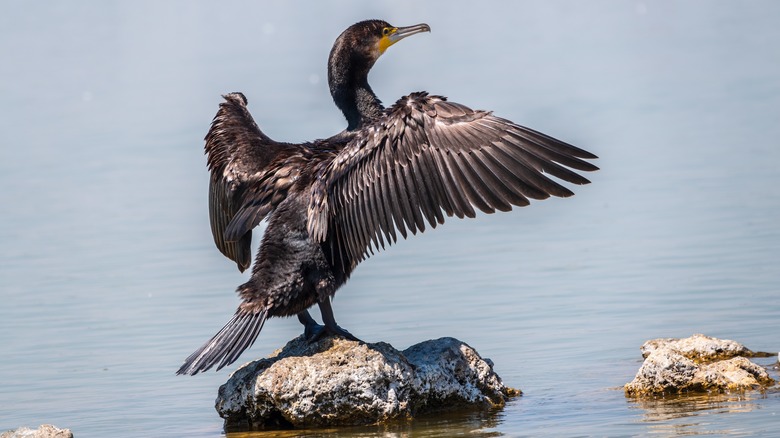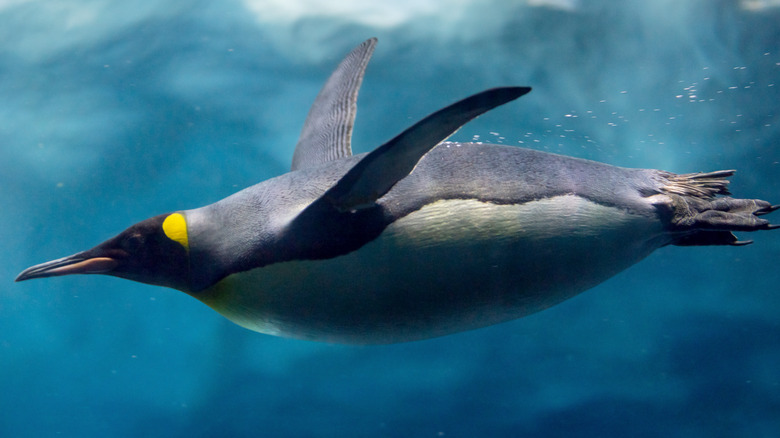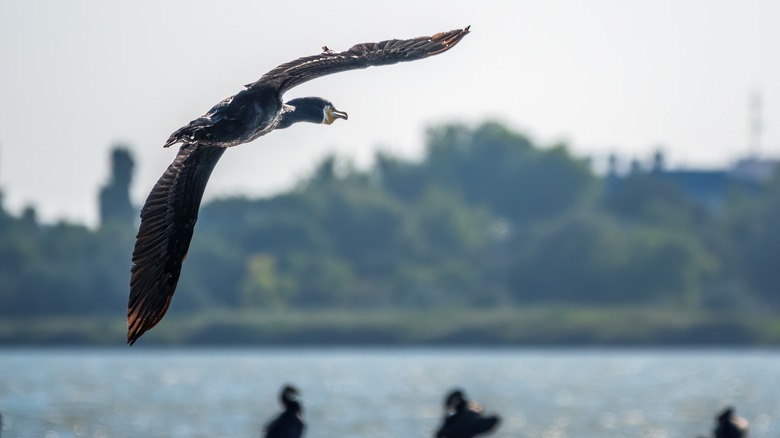The Common Water Bird Behavior That Has Been Linked To High Extinction Rates
There are undoubtedly a huge range of fascinating species here on Earth. Giraffes. Millipedes. Alligators. The duck-billed platypus. Ostriches. Per the African Wildlife Foundation, ostrich eggs are as heavy as 1.5 kilograms (around 3.3 pounds). The birds' general intimidating size — they can reach 9 feet, or 3 meters — is well known, and they are some of the most iconic birds in the world as a result. The IUCN Red List of Threatened Species lists the common ostrich as a species of Least Concern and the Somali ostrich as Vulnerable, though it notes that populations of both are declining. They are, sadly, yet more glorious animals in danger of disappearing.
Tragically, the world has already lost some incredible birds to extinction. Perhaps the most notable and famous example is the dodo. These birds, Britannica reports, lived on Mauritius, where they were discovered in the early 1500s. Docile, incapable of flight, and nesting at ground level, they were quite the bounty for hungry sailors and went extinct in 1681.
It would be easy to simply assume that human activities are to blame for trends like these, and habitat reduction is certainly a common factor in species decline. However, a lot of water birds seem to be fond of a particular behavior that's very dangerous to them too.
Those dizzying dives
Other species, naturally, are far speedier and more elusive than the unfortunate dodo. The peregrine falcon, according to Guinness World Records, is capable of the fastest dives of any bird on the planet. It is believed to be able to reach speeds of 200 miles per hour (320 kilometers per hour). It may even be able to hit 242 miles per hour (389 kilometers per hour). Though the peregrine falcon's pace is unparalleled, speedy assaults such as these are vital for many bird species. Water birds in particular are capable of impressive dives themselves in order to out-maneuver their marine prey. They are, of course, biologically equipped and adapted to do just this.
In October 2016, Proceedings of the National Academy of Sciences published the article "How seabirds plunge-dive without injuries" from Brian Chang et al. After a study to replicate the speed and style of movement of certain birds, the researchers concluded that their success was "primarily attributed to the neck length and chosen diving speeds, which stay in parameter regimes that prevent the neck from bending under compressive loads. The neck muscles move plunge-divers further away from the buckling transition."
The act of diving itself, then, isn't generally harmful to the birds. The issue, it seems, is that the specialized behavior leads them to hunt specialized food in a specialized way, thus leaving them more vulnerable to extinction in the long run.
You can't teach an old bird new tricks
Joshua Tyler and Jane L. Younger tackled just this issue in "Diving into a dead-end: asymmetric evolution of diving drives diversity and disparity shifts in waterbirds," which was published in Proceedings of the Royal Society B in December 2022. The research suggests that such dives, while a tremendous hunting asset for the birds, are also what the scientists deem a "diving niche" which may spell their ultimate extinction.
The researchers divided diving behaviors among 727 waterbird species into four categories: "non-diving, plunge diving, pursuit foot diving and pursuit wing diving." In a second model, categories were simplified into waterbirds that dive and those that don't. "Both of these models do not allow reversions back to non-diving," according to the study, the suggestion being that this evolved behavior in a permanent one.
It is those species that feed on specific prey, of course, that are in most danger when access to that food source becomes scarce. "The range of environments available for foraging is much larger for the non diving birds than for the specialist divers, and this may play into their ability to adapt and thrive," Tyler explained, per ScienceNews.
The marine environment, just like any other, is incredibly vulnerable to the effects of the climate. As this volatile balance is further disturbed, it's crucial to consider the widening impact this will have on those animals that have such specialized hunting methods and their survival.


